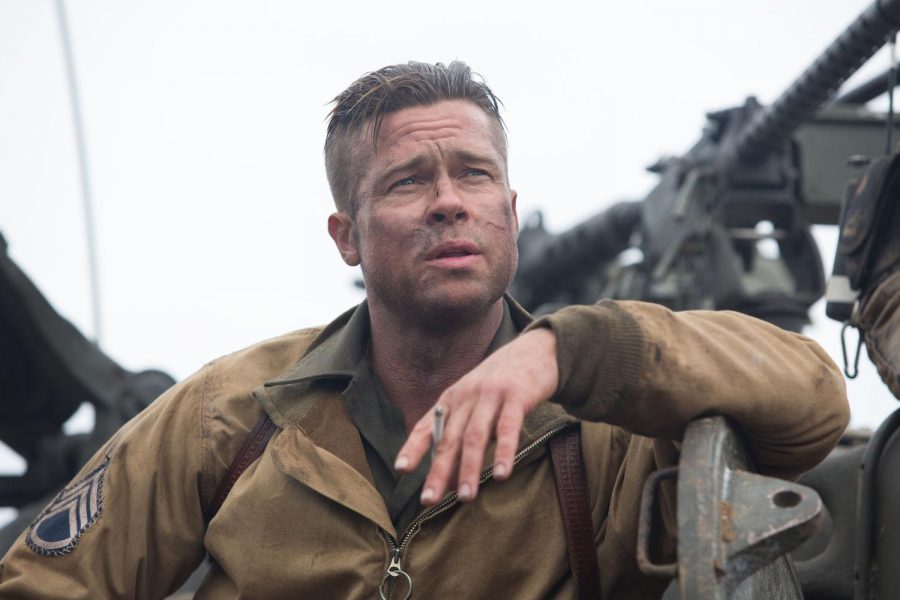‘Fury’ rips every page out of WWII playbook, but still entertains
October 21, 2014
“Fury”
Directed by: David Ayer
Starring: Brad Pitt, Logan Lerman, Shia LaBeouf
Grade: C+
If you needed more proof that the war genre has been done to death, here’s “Fury,” a handsomely made, decently acted and robustly entertaining WWII film that lacks any sort of originality and has almost nothing new to offer to the exhausted genre.
Known for his gritty, masculine action movies (ranging from the respectable “End of Watch” to this year’s Schwarzenegger dud “Sabotage”), writer and director David Ayer — his hit-and-miss résumé aside — recreates, with grubby authenticity, a vividly grim depiction of World War II and injects the expected adrenaline into the full-blooded combat scenes. But he is less recognized for his subtlety, the lack of which robs “Fury” of any palpable emotional substance.
Taking place at the tail end of the war, “Fury” follows unsympathetic sergeant Don “Wardaddy” Collier (Brad Pitt) and his reliable tank crew — the religious Boyd “Bible” Swan (Shia LaBeouf), the quiet Trini ‘Gordo’ Garcia (Michael Peña) and the rambunctious Grady “Coon-Ass” Travis (Jon Bernthal). After losing a soldier in a previous battle, rookie Norman Ellison (Logan Lerman) is thrust into Collier’s command as the Americans begin the final effort to push through Nazi Germany in order to end the war.
Though perhaps we haven’t seen tank warfare onscreen specifically, the film’s script is half-baked and teeming with clichés, both in its profanely predictable narrative to its recycled dialogue. It’s all painfully oversimplified.
Yet, what is not in black-and-white is the film’s stance on war. It begins with what seems to be a clearly anti-war message based on the realistically gruesome violence that almost feels like it’s trying to be shocking — the opening shot features Pitt’s character stabbing an unsuspecting S.S. soldier in the face. Seriously. But then the glorified final showdown between our outnumbered protagonists and hundreds of Nazis appears to venerate just the opposite. It’s surprisingly difficult to guess if the group’s repetition of the line “the best job I ever had” just before the excitement of the climactic carnage is supposed to convey irony or the contrary.
Perhaps all the thematic confusion is based on how we connect with Lerman’s character — the scrawny, untested youth who, like us, is unfamiliar with his violent surroundings. The character is pathetically written, however, his unbelievable arc taking him from morally challenged weakling to Nazi-killing prodigy in a matter of a few days. Lerman, a fine young actor, tries his best, but he can’t salvage anything real from his robotically written role.
It’s Pitt’s performance as the no-nonsense commander that saves “Fury” from being unbearably trite. Underneath the disillusion of war, his heart of gold has long been hardened, easily making him the film’s most interesting character, and the supporting cast is commendable as well.
Also, despite the film’s tendency for battles and explosions, the second act of “Fury” is perhaps its strongest due to the intimate’s 20-minute pause in which Don and Norman take rest inside a German house with two women. Disquietingly meditative and containing dialogue miles better than anything else in the film, this peaceful sequence is the best moment in “Fury.”
Confidently directed and sleekly produced, it’s hard to call “Fury” a bad film — but, at least for the war genre, rehashing well-worn ideas is a futile effort no matter how reasonably entertaining the results may be.








